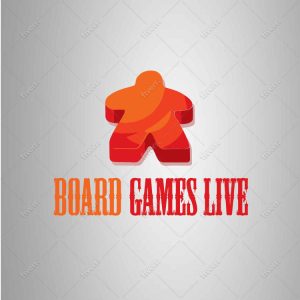Designer Diary: First-Class Letters, or Alphabetical Challenge, Finding Game’s Home, Minimal Rules
The more I design, the fewer rules I put into my games.
Every time I playtest a game (mine or someone else’s), the first instinct is to solve a problem (any problem!) by adding a rule. If people are getting too much wheat, make a rule that they can hold only a certain amount, or limit how many times they can go to the wheat space. If the “launch ship” space is too weak, make it “launch ship OR collect $3”.
The fewer rules you have, the more elegant your game — but getting there takes discipline; adding a system to any/every issue you encounter is the easiest solution, but rarely the best. These small additions add up. It’s like paying for everything by credit card: You don’t see the true cost until much later.
Welcome To… is one of my favorite games to teach. There’s just something about the flow of rules that I enjoy. I love playing it, of course, but as the person who’s often teaching the game, “fun to teach” is something I hold in high regard.
And so I play a lot of Welcome To…, which means I spend a lot of time thinking about Welcome To…, which means I asked myself: What makes Welcome To… fun? It took me a while to identify: Welcome To… offers the same fun as Patchwork — there’s something inherently enjoyable about trying to fill increasingly restrictive gaps. It’s a puzzle and not one that can always be solved, but one that is satisfying to work at (and even more so if you can perfectly fill the slots).
One day, as I was driving and pondering the “fill in the ever-more-specific gaps” method of fun, I realized that you could do it with words.
The second draft of First-Class Letters contained the entire core of the final game. (The first draft was a lot messier, with a bunch of ideas that were abandoned halfway through the first playtest.) This is something that happens to me more often, not so much because I’ve become some kind of design savant, but because I spend less time on games that don’t work early in the process.
The first draft, with variable scoring cards that were immediately cut for being too mathy
The rules of that second draft, in full:
1. Everyone takes a sheet of paper with five lines on it.
2. Roll three letter dice. (For my first prototype, I just used Boggle dice.)
3. Everyone simultaneously writes a word on any of the lines, then scores 1 point for each time a rolled letter was used, e.g., if the letters were MPS, “Passes” would score 4 points.
4. If you used all of the rolled letters, each usage scores 2 points instead of 1. (“Spammers” would score 10 points.)
5. Add a die to the pool and repeat.
6. After five rounds, add up your totals, ignoring the score for any words out of alphabetical order
That’s it! As you can see, this design is about as rules-light as a word game can be.
There were edge cases, of course, but as I playtested, instead of solving them with extra rules (that pesky first instinct!) I did everything I could to eliminate those situations from happening in the first place. How does scoring work if you roll the same letter on two dice? I made custom dice with no duplicates.
For the next few months, whenever I had a meeting with a publisher, I mentioned this game (working title: “Alpha”). It had the feeling of a classic game, largely due to the paucity of rules.
Cutting rules is more than just an exercise. Several of the game’s reviews have mentioned that this is something their non-gamer family will happily play, which has been my experience as well: Of all the games I’ve had published, this is the first that my Mum has asked to play again and again.
My mother hates pictures of herself, so here’s one of the back of her head, playing checkers with my son
But nowadays, “feels like a classic game” isn’t much of a selling point. All of those initial publishers passed; they liked the game, but it didn’t have a distinct enough selling point.
One of the more frustrating elements of being a full-time designer is the disconnect between “I like this, I’d happily play it, I’d buy it when it comes out” and “I want to publish it”. I get it; publishing a game is a huge investment, and you can’t sign everything you like, but the feedback of “This is great! I love it! Not for me.” is rarely actionable, so after a dozen rejections, I put “Alpha” in a drawer. I was confident it would find a home. I just had to wait.
Enter Paul Salomon.
Paul is a designer — you’ve probably seen his games Honey Buzz and Stamp Swap — who holds a unique position as being “the only person in the industry who is passionate about Cartouche“.
Cartouche, a co-design with Jeff Fraser, was a game that I did an abysmally poor job of publishing myself. I’m very fond of it, but it never found an audience.
Well, that’s not quite true. It found Paul. He reached out to me on two separate occasions to compliment me on the game, and when he started working as creative director for GameHead, I believe it was his love of Cartouche that inspired him to reach out to see whether I wanted to pitch him any games.
I jumped on a call and talked him through everything I had available. He was interested in a few, but “Alpha” was what most caught his eye. Just a few weeks later, he reached out with an offer: “Alpha” was going to be one of the initial offerings from GameHead.
With all my smugness about how elegant and rule-free the game was, one would expect this to be the end of the design diary…but the more Paul played “Alpha”, the more room he saw for improvement.
I was resistant to anything that added rules, but to my delight, his biggest suggestion did the opposite. Instead of seven dice, he suggested cutting the game down to three and removing the rule that added a new die each round. What’s more, the game would now last seven rounds instead of five, which better showcased the alphabetical-order element.
But no game survives development without additional rules. The first was my fault because during playtesting, something had occurred to me. If you just memorized a bunch of insanely long words — Pneumonoultramicroscopicsilicovolcanoconiosis appears in most dictionaries — then you could all but ignore the dice, play your monstrous words, and kick the ass of anyone else you were playing with.
My initial pitches had all been to publishers who would be selling the game at Walmart, Target, etc. I was less worried about my mum (hi, Mum!) memorizing words to win. In fact, even with the audience that GameHead was targeting, it wasn’t a serious concern…but it still bothered me. The best way to win a game should align with the most fun way to play a game, and the fact that you could win this game in such an unfun way really annoyed me.
Enter the “dead-letter” die. You’d roll it each round, and if your word included the letter shown, it would score no points.
Picking which letters to include was an interesting journey. Originally, the dead-letter die featured the five vowels and Y, but it was impossible to score Q if you rolled a U on the dead-letter die. We ended up replacing U with S, which stopped people from nabbing an uninteresting extra point by just making their words plural.
How much do you penalize a player for messing up and using the dead letter? We quickly learned that if the penalty was anything less than “you score nothing”, people would do the math and take the negative points in exchange for the bonus that “cheating” gets you. This was actually a lesson I also learned on Vegas Strip, another of my games that was in development at the same time: You have to truly penalize people for breaking rules; otherwise you’re just inviting exploitation.
The other big change to First Class Letters was one that I pushed back on for an embarrassingly long time. Paul was worried (even with the shift to seven words) that the alphabetical element still wasn’t at the fore. When you have seven blank lines, “writing in alphabetical order” is easy until the last two or three words. This was something I’d noticed in my own early playtesting, which is why I’d so quickly cut the game down from ten rounds to five.
Paul’s suggestion was simple: At the start of the game, roll the three dice. Your second, fourth, and sixth words had to start with those three letters.
The biggest difference between this and the final scoresheet was the addition of an alphabet down the side
I’m a big proponent of “every idea is worth playtesting”, so even though I had a million reasons this wouldn’t work — including “It adds a rule!” — I took the game to my next playtesting day…and, of course, that rule immediately made the game much better. Aggressively leaving rules out at the start had given us room to include one when it was warranted.
The rest of the development process went smoothly. We spent a lot of time deciding which letters should go on which dice, we added a few extra modes (solo, co-operative, a simple mode removing the dead-letter die, an advanced mode which did the opposite: one of the rolled dice must be included in your word), and we added a theme.
Paul’s instinct was that the game didn’t need a theme, a là Boggle or Scattergories. I agreed that it didn’t need a theme…but wouldn’t it be fun to have one anyway? We threw ideas around and ended up with a postal theme, which I think really adds to the game — especially since it let us decorate the dice to look like parcels.
Gorgeous four-color dice! They’re so chonky!
Designing First-Class Letters was like playing it; every new idea had to neatly slot in or be cut. After the first round of rejections, I was tempted to give up on it, but I’m so glad I persevered. GameHead was the perfect fit for the game, and Paul’s development pushed it further than I thought the game could go.
First-Class Letters has been out for a few months now, and I’m really proud of it. Rules-light is my default starting point these days, but it doesn’t get you all the way; finding the right publisher is just as important.

/pic8991675.jpg)
/pic9107260.png)
/pic9107281.png)
/pic8730212.jpg)
/pic8645546.jpg)
/pic9107299.png)
/pic8439856.jpg)
/pic9113044.png)
/pic9107497.png)
/pic9113045.png)




